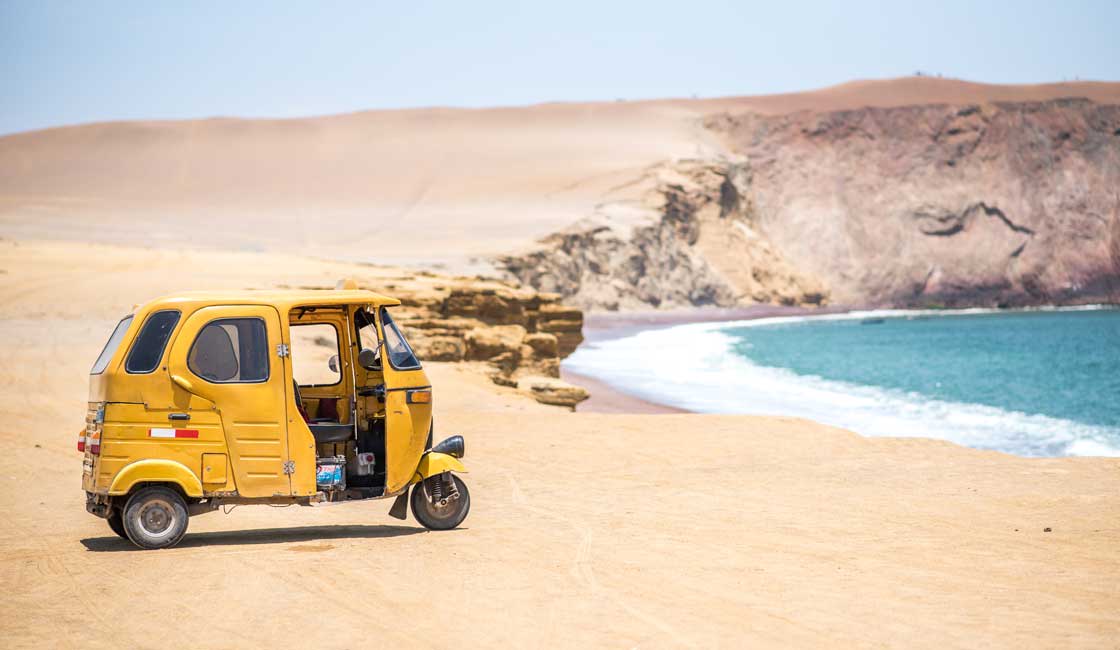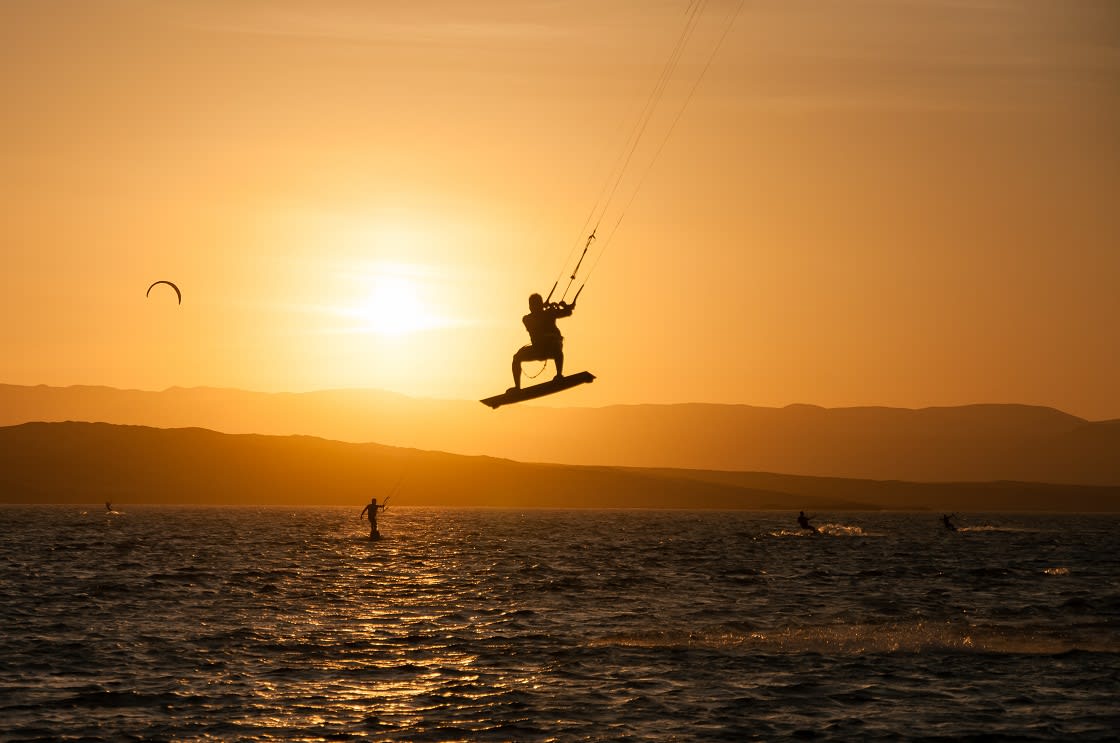
Paracas is a town, peninsula, bay, pre-Inca Culture, as well as Peru’s oldest and largest protected coastal reserve. Most visitors come to Paracas to visit the spectacular Islas Ballestas and the Paracas National Reserve, famed for their plentiful wildlife, dramatic scenery and thrilling adventure activities. Located along Peru’s southern coast near Pisco in Ica, Paracas is one of Peru’s most popular attractions and makes a convenient stop off point for those traveling between Lima and Cusco.

Aerial View Of El Chaco Town, Paracas
The main settlement on the Paracas peninsula is El Chaco (often simply referred to as “Paracas”) which provides the ideal base for exploring the area’s surrounding attractions. There are numerous comfortable places to stay, including the highly recommended Libertador Paracas, perfect for both couples and families, featuring swimming pools, a spa and an attractive white sand beach. Paracas is home to a lively traveler scene, complete with tourist facilities and a wide array of bars and restaurants, many of which specialize in excellent seafood.

Kitesurf In Paracas
Opportunities for a host of thrilling active adventures abound in Paracas, both in and around the village and further out across the peninsula. The area’s steep sand dunes make it perfect for buggy tours and sandboarding for those after pure adrenaline. For something a little more leisurely, rent a bike and spend the day cruising along the spectacular coastline, breathing in the fresh sea air and stopping at any one of the beautiful beaches. Sheltered in a bay, the beaches are protected from any wild surf and the water is warmer than average, making them great for swimming. There are also plenty of water sports to enjoy, such as windsurfing, sea kayaking and scuba diving.

Paracas National Reserve is a protected area located in the region of Ica, Peru
The Paracas peninsula had been protected as a National Reserve since 1975 in order to preserve its unique natural beauty, abundant wildlife and rich cultural heritage. The Paracas National Reserve features beautiful desert landscapes and wild ocean waters rich in marine and bird life. The two meet in spectacular fashion, where you’ll find endless stretches of colorful beaches, towering cliffs teeming with life and sweeping panoramic views.
There are countless opportunities to get out and explore the peninsula and the further out you venture the more dramatic and remote the landscapes you’ll encounter. Rent a 4×4 for maximum flexibility and to access less frequented areas, or join one of numerous informative and thrilling tours via car or ATV.
The whole area is renowned for its stark desert landscapes and beautiful coastline. The Playa Royo is characterized by the intense red color of its sand and is a great place to spend time fossil hunting. Be sure to stop by the striking “Cathedral” rock formation and traverse the spectacular salt flats at Otuma and Mendieta. The lookout point at Punta Arquillo offers memorable views over a large sea lion colony basking on the rocky shore, whilst Bahia de la Independencia is one of the peninsula’s most stunning and isolated beaches and another must-visit.
What’s more, the cliffs that fringe the beaches are teeming with an abundance of wildlife, including unique flora, Humboldt penguins, sea lions and millions of birds. Paracas is a particular haven for migratory birds and is actually considered to house the largest concentration of birds on the planet. Whether you want to catch sight of striking scarlet flamingos or the majestic South American condor, wildlife lovers certainly won’t leave disappointed.

Tambo Colorado, Near Paracas
A visit to the Julio C. Tello Museum near to the village provides a great introduction to the peninsula. It features a fascinating collection of exhibits related to the Paracas Culture, including intricately woven textiles, delicate ceramics and numerous other artifacts, along with details on the area’s ecology.
Nearby, you’ll also find a couple of Paracas burial grounds, dating from around 700 BC, where archaeologists discovered mummified remains and many fine grave goods. Other archaeological treasures worth visiting include the Tambo Colorado, a well-preserved ancient settlement that is one of Peru’s most important coastal Inca structures, as well as the Candelabra geoglyph Nazca line that is best viewed en route to the Islas Ballestas.

Mammals found in the reserve include the sei whale, the marine otter, the sperm whale, the humpback whale, the South American sea lion among others.
Commonly referred to as the “poor man’s Galapagos”, the Islas Ballestas are another popular attraction for those visiting Paracas. The group of rocky islands rank amongst Peru’s best wildlife-watching destinations, serving as an internationally important sanctuary for a variety of mammals, marine species and birdlife.
The islands are located 24 kilometres off shore and there are numerous operators running tours from Paracas. The whole experience is a great bargain, involving a 2-hour round-trip by boat for only US$10-15. You’ll spend a good hour or so cruising around the islands’ rocky coastline with its spectacular inlets, arches and caves.
As you approach the islands, you’ll realise that virtually the entire surface area is covered in a dense collection of wildlife. Some of the fantastic species you can expect to see include Humboldt penguins, bright red sea stars and huge packs of fur seals which can be seen basking on the shore or frolicking in the water.
There is also an astonishing amount of birdlife on display, with up to 150 different species calling the islands home. These range from tendrils, cormorants and pelicans, to the blue-footed booby and the guanay guana bird, all congregating in colonies of several thousand strong. You might also catch sight of Chilean flamingos, condors, as well as bottlenose dolphins if you’re especially lucky.
While Rainforest Cruises aim to provide accurate and up-to-date information, we make no representations as to the accuracy or completeness of any information herein or found by following any link on this site. Rainforest Cruises cannot and will not accept responsibility for any omissions or inaccuracies, or for any consequences arising therefrom, including any losses, injuries, or damages resulting from the display or use of this information.




